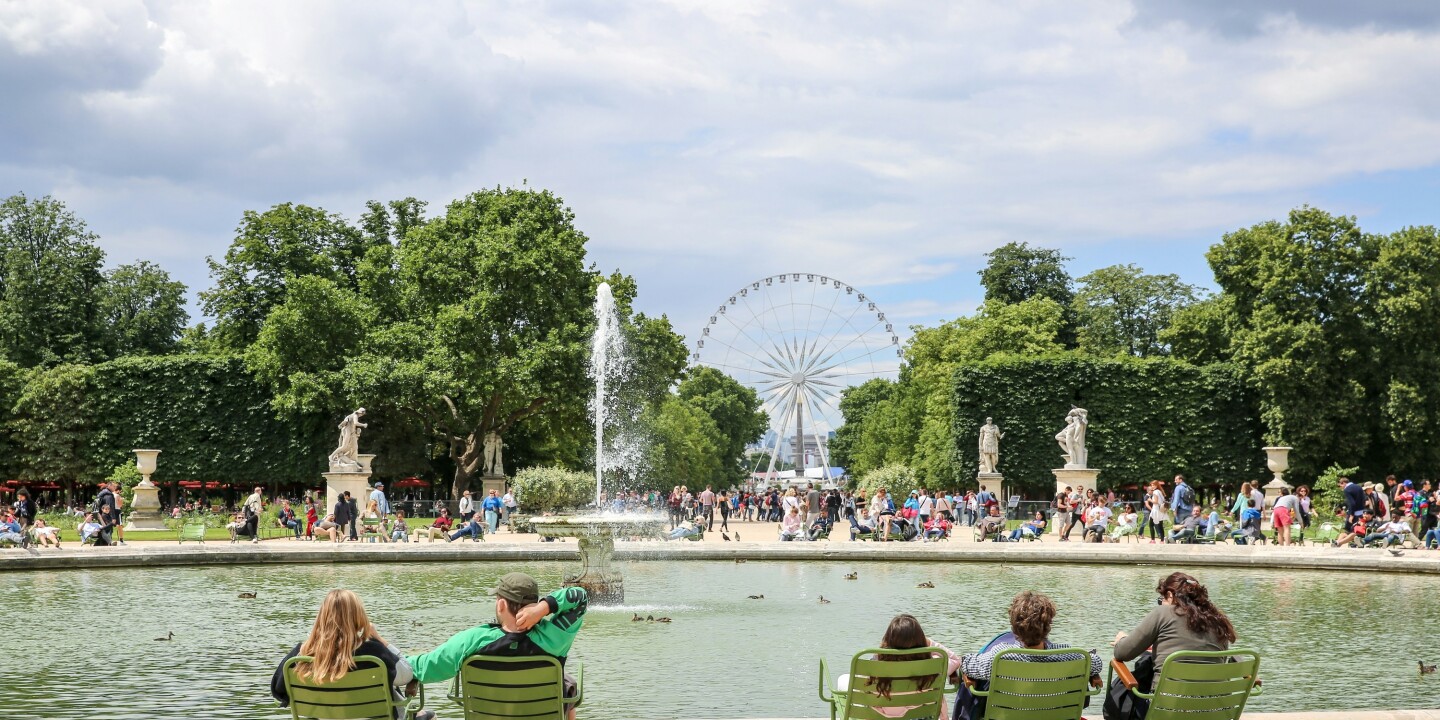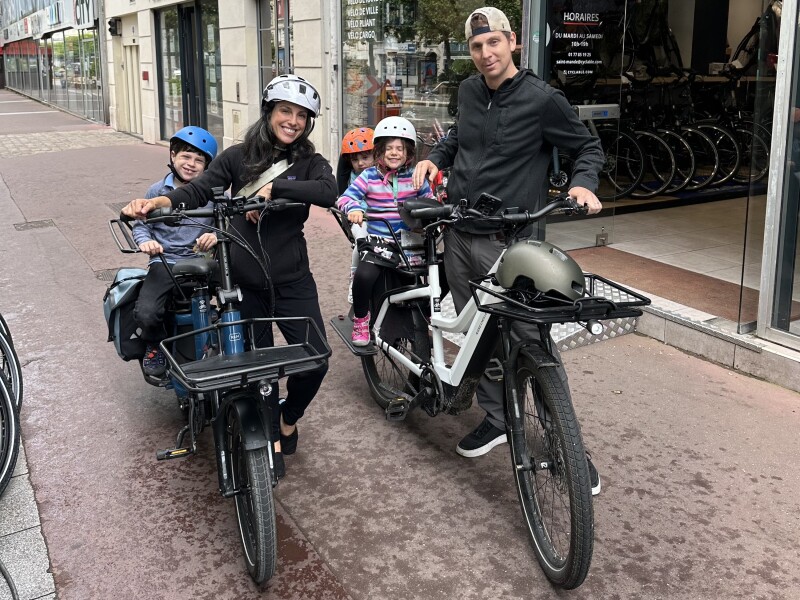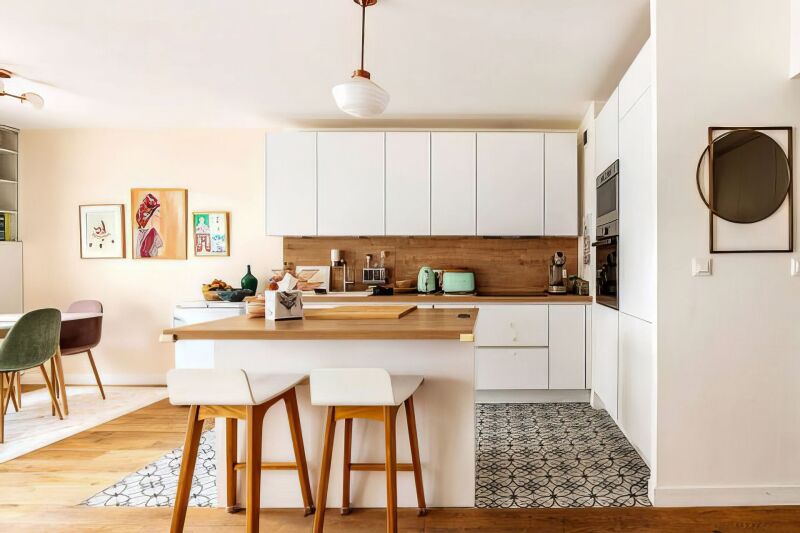28Views 0Comments

Summer Camps in Europe, Asia, and Mexico for U.S. Families
During a summer vacation with her husband and kids to the Netherlands in 2019, New York City mother Maddy Novich—a professor of criminal justice at Manhattan University and then mom to two young children—honed in on a travel hack that completely changed the way her family travels.
Novich and her husband, Jeff, had gotten into home swapping during their travels, using the website, HomeExchange, as a way to save on accommodation costs and immerse their family in local neighborhoods abroad. They spent the summer of 2018 living in a beautiful townhome in Leiden in the Netherlands and enjoyed the Dutch biking culture so much they decided to return to the country for their following summer vacation.
In 2019, they swapped Leiden for Amsterdam after landing another great home exchange in that city. (That’s when Novich fell in love with the Dutch bakfiets, leading her to buy her own cargo bike when she returned home and launch her Instagram account CargoBikeMomma, sharing her pedaling adventures with her kids around NYC.)
It was during the family’s second summer in the Netherlands that Novich and her husband made another key discovery—a local LEGO summer day camp for their oldest child, Jack.
While he was diving into brick culture with kids from around the world, doing Dutch arts and crafts and playing outside with new friends, Novich and her husband took time to enjoy leisurely meals in fun neighborhoods like the Jordaan and visit art museums where they had to time “to actually read the plaques alongside the paintings,” she says. (They didn’t have childcare for their younger daughter at that time, but “even being down one kid can feel like a vacation,” says Novich.)
“It was amazing. Our son was about five years old then and he loved it,” she says. After that summer, the family was hooked on summer camp abroad, and returned to the Netherlands for several years to enroll their kids in other camps.
“They made pizzas, they went to playgrounds, they played Minecraft and LEGOs. And my husband and I had alone time to do the things we wanted to do knowing that our kids were safe, well-cared for and having these very enriching, cultural experiences,” she says.
Novich, a professor in New York City, has summers off, and Jeff is able to work remotely. Since 2019, the family—now including children Jack (11), Sloane (7), and Marlow (4)—has spent roughly nine weeks every summer in European cities, swapping homes with locals while letting the kids enjoy day camps in places like Copenhagen, Berlin, Vienna, and Krakow.
This summer, Jack is enrolled in his first sleepaway camp in Leysin, Switzerland, through Village Camps, and the family has a home exchange in a nearby village where they’ll be able to profit from all the beauty and outdoor adventures of a Swiss summer. They’re also planning a summer camp adventure for the kids in Scotland.

Maddy Novich, her husband Jeff, and their three kids spend summers in Europe, often embracing the cargo bike lifestyle while abroad.
What kind of summer camps are there abroad and how much do they cost?
Just as your options for summer camps for kids in the United States vary in interests, ages, and activities, the same situation exists in many countries in Europe and other international destinations, says Novich.
You can find everything from one-off day camps in big cities like London and Amsterdam to scuba diving, golf and tennis day camps, and multi-week overnight adventures at locations like Spain, the Caribbean, Indonesia, and more.
“There are nature and play camps, German language camps, coding camps, sailing and surf camps, farming camps in Italy, tennis and polo camps in France. It runs the gamut,” Novich says.
You might let your kids’ particular hobbies or interests lead you to the perfect summer camp option. Or decide on the country you want to visit to whittle down your options, says Novich. Her family’s decisions for where to travel each summer tend to tie in with where they find a good home exchange.
Once you’ve landed on a destination, joining online groups of local expats in a city, country, or region can be a good way to get advice on the best camps for kids in the area, too.

A LEGO summer camp in the Netherlands really turned the Novich family on to experimenting with kids programs in other countries.
“Then you have eyes on the ground and people who have sent their kids there before,” Novich says.
Coming from high-priced New York City, Novich says she’s been pleasantly surprised by the cost of day camps in the European cities she’s visited. “Last summer in Krakow, we paid around 240 euros a week (per child) and it included three meals [daily],” she says.
It’s not too late, even now, to find options for summer camps in June, July, and August, she notes. “Many places don’t have the same competition we have in New York where if you didn’t sign up in January, your kid’s not getting in.”
Keep in mind, too, that while there are exceptions, most summer day camps in Europe usually take kids starting from around age five.
What about language differences?
Many summer camps abroad, especially those held in major cities and at international schools, offer instruction in English even when campers hail from a mix of countries. And while English being the base language of a camp isn’t a mandatory requirement for Novich when she chooses camps (“play is the international language,” she says), she always makes sure that some of the staff members speak it fluently so she can ensure effective communication and peace of mind.
“I highly encourage people to make sure they have clear communication with the staff in their primary language,” she says, noting that it’s important to be able to communicate for safety reasons in case of an emergency. “That’s something you can and should establish before you arrive or enroll.
“Most of these camps have WhatsApp numbers so you can call before signing up to ask questions and learn about the programs,” she says.

Using home swapping platforms like HomeExchange, which offers this apartment in Paris, is one way to offest living costs in foreign countries
How do you find longer-term lodging?
Some summer camp programs abroad can help families find accommodations during their stay, while for others you’ll be on your own for lodging.
Consider turning to sites like Booking.com and VRBO for longer-term vacation rentals so you can enjoy amenities like laundry and kitchens for cooking meals.
For Novich, swapping her family’s NYC home for one abroad for several weeks at a time during the summers, when her university job is on break and her husband can work remotely, has paid dividends by making the family’s trips not only more affordable but also more authentic.
“By living in a local home and putting our kids in a local day camp, you can do the touristy thing, but you can also do the local thing. I’ve uncovered so many beautiful and amazing places by simply living like a local, so it’s very rewarding. The kids get a really authentic cultural experience that they might not have otherwise,” she says.
Knowing that you’re staying in a family home has other advantages that are hard to replicate in a hotel, she’s found. Home exchanges often have high chairs, play rooms ready for the kids, even umbrellas for you if it rains, Novich says.
“We stayed in a place in Amsterdam that had a trampoline in the backyard. You can get the family’s recommendations for local babysitters, and we pack really small suitcases because we know we can do laundry,” she says. “My kids ended up making friends with a kid at the Tarragon Nature Camp that lived a five-minute bike ride away, so they had play dates even after the camp ended.”
If all that sounds to you like an ideal way to enjoy a summer family vacation, Novich has an entire newsletter dedicated to camp recommendations and tips. And below we compiled some of her ideas and ours to help get the wheels turning for where to enjoy your own global family camp adventures this summer or next.
What international summer camps are recommended?
CopenCamp
Location: Hellerup, Denmark
With separate day camps for kids four to six years old (8:30 a.m.–4:30 p.m.) and those seven and older (9 a.m.–4 p.m.), the English-speaking CopenCamp summer program offered in the Hellerup suburb of Copenhagen has weekly themes ranging from Art & Sports to Space & Nature. It’s the Danish way to get messy at play, whether they’re frolicking outdoors or creating a masterpiece painting, so bring them dressed for the occasion. From 2,100 Danish krone (US$320) per child, per week.
Dream Forest Camp
Location: Kho Phagnan, Thailand
Pair a family sojourn to Thailand with enrolling the kids in this nature-oriented day camp in the tropical forest of Koh Phangan. Dream Forest Camp sessions run from mid-July through the end of August, from 9 a.m. to 3 p.m., with a range of activities designed for both 4–12 year olds and 12–15 year olds (snacks and lunch are included). Drama, improv classes, meditation, eco adventures, beaches, and waterfalls are all part of the fun. Weekly rates from 1500 Thai baht (US$200) per kid. English, Hebrew, Russian, and Thai are spoken.
Esti School Summer Language Camp
Location: Krakow, Poland
The English-speaking Esti School Summer Language Camp in the woodsy outskirts of one of Poland’s most atmospheric and artistic cities has a different theme every week (geography, sports, science, and art, to name a few) and all-day sessions (8 a.m.–5 p.m.) from July through late August. Kids are divided into age groups (5 to 7 year olds and 8 to 12 year olds); they can look forward to karate, yoga, and dance lessons mixed in with outdoor activities. From 780 Polish zloty (US$208) per child, per week.
Fashion Art and Design Summer Camp at the International School of Milan
Location: Milan, Italy
During these two-week day (9 a.m.–5 p.m.) and overnight camps your fashion-minded teen will take Italian language classes as well as fashion design, sustainable fashion, and Italian culture courses at this international school in this fashion capital. There are excursions to fashion houses and museums. By the end of the Fashion and Design Summer Camp, they’ll even have a portfolio to show for it. For ages 13 to 17 with day camp programs from 1,700 euros/two weeks. Sessions run from late June to late July.

Bali’s Green School in Ubud pofers both day camps and sleepaway camps.
Green Camp Bali
Location: Multiple Indonesia locations
Bali’s renowned Green School in Ubud puts on a slew of summer camps for ages 4 through 18 that include both day and sleepaway camps. Camps are all conducted in English and include everything from cooking and naturalist day camps in Ubud to overnight island exploration camps throughout the archipelago and even a day camp option at Ayana Resort in Jimbaran. Three-day day camps from 9 a.m. to 4 p.m. for 7 to 12 year olds cost 5 million IDR per child (US$307).
Little Makers
Location: Amsterdam, Netherlands
This English-speaking kids atelier offers hands-on art workshops throughout the year and launched its first half- and full-day summer camp options this summer, geared toward kids ages 3 to 10 years old. (Single-day options are also available.) Arts and crafts, Dutch games, songs, and lunch and snacks are all included at Little Makers. Priced at 325 euros per week/per kid for half-day sessions (9 a.m.–1 p.m.) and 525 euros per kid for full-day sessions (9 a.m.–4 p.m.).
Oasis Spanish & Surf School
Location: Puerto Escondido, Mexico
For kids 8 to 14 years old, this Spanish immersion day camp in the beach town home to one of Mexico’s most famous surf waves includes hours of time in the Pacific ocean for surf lessons at Carrizalillo Beach plus Spanish instruction, cooking lessons, cooking and painting classes, and surf theory instructions about paddling techniques and water safety. Camps run from June 30 to July 18, 9 a.m. to 3 p.m., and cost $470 per week per kid.
Olé Immersion Summer Camps
Location: Valencia, Spain
With half- and full-day camps as well as sleepover options, this family-owned camp run by native Spaniards offers loads of activities that include sports, beach time, and Spanish language immersion at locations in and around Valencia. Olé Immersion Summer Camps start from 250 euros per week per child for half-days and 605 euros per week for sleepover options.
Summer Camp at Empathy School
Location: Ubud, Bali, Indonesia
Rice fields and the jungle are your kids’ natural playground at the bilingual (English and Indonesian language) Summer Camp at Empathy School in Bali for ages 1 to 14 years old, with sessions June through August. Kids learn to play Balinese music, try wood carving, navigate bamboo bridges during river adventures, and have mud parties in this entirely outdoors day camp. Weekly themes include Ocean Explorers, Earth Guardians, and Culture Keepers. Camps run from mid-June through the first week in August. The cost is 8,800,000 IDR (about US$540) per child, per week.
Terragon Nature Camp
Location: Amsterdam, Netherlands
There are four to five kids per camp counselor at this nature day camp for kids ages 4 to 10. It’s held in the forested outskirts of central Amsterdam (with pick-up service in the city center). English, Dutch, Spanish, and French are all spoken during a week full of storytelling and outdoor and indoor games with the backdrop of a 2.5-acre nature reserve. Terragon Nature Camp’s summer camp sessions run from mid-June through the first week of September from 9 a.m. to 3 p.m. The cost is about 316 euros per child/per week.
Village Camps Switzerland
Location: Leysin, Switzerland
Kids from more than 30 countries arrive in the Swiss Alps village of Leysin for themed overnight camps (dance, language immersion, leadership training, lab explorers, tennis, STEM, and more) geared at age groups between 7 to 17 years old. Campfires, overnights in mountain huts, and rock climbing, mountain biking, and swimming are among the many camp activities. Two-week Village Camps start from 5050CHF (about US$6,177) for ages 7 to 9.



